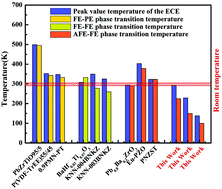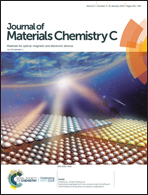Giant negative electrocaloric effect in antiferroelectric PbZrO3 thin films in an ultra-low temperature range
Abstract
Antiferroelectric thin films have demonstrated an excellent negative electrocaloric effect, and are potential candidates for future refrigeration applications. In this study, the electrocaloric effect of polycrystalline PbZrO3 antiferroelectric thin films, deposited on Pt/Ti/SiO2/Si substrates by a sol–gel method, were studied by an indirect method based on the Maxwell relations. It was found that the PbZrO3 thin film undergoes a phase transition from the antiferroelectric to ferroelectric phase driven by the coupling of electric field and temperature. The antiferroelectric to ferroelectric transition leads to a giant negative electrocaloric effect in the PbZrO3 thin film. It is also found that the phase transition temperature decreases with the increase in the applied electric field. As a result, the giant negative electrocaloric effect of the PbZrO3 thin film could be tuned to room temperature, liquid nitrogen temperature and even down to liquid helium temperature range by applying different magnitudes of external fields. For instance, the maximum electrocaloric temperature change is −6.8 K at 292 K under 500 kV cm−1, −6.7 K at 229 K under 600 kV cm−1 and −3.8 K at 138 K under 700 kV cm−1. Our results expand the working temperature of the electrocaloric materials into the ultra-low temperature range, and open up a new landscape for achieving low temperature cooling using ECE devices.



 Please wait while we load your content...
Please wait while we load your content...